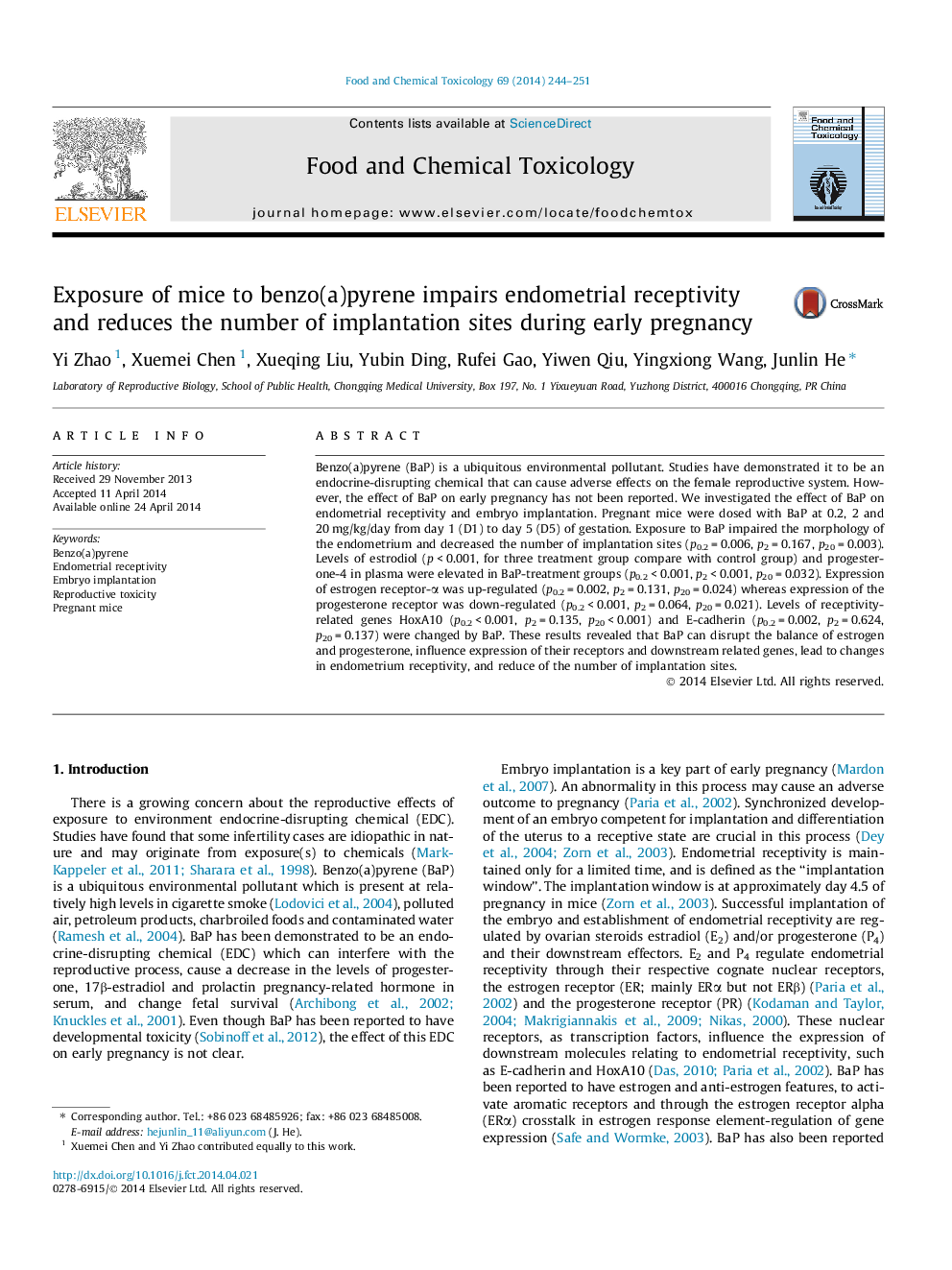| Article ID | Journal | Published Year | Pages | File Type |
|---|---|---|---|---|
| 5850260 | Food and Chemical Toxicology | 2014 | 8 Pages |
â¢Mice exposed to benzo(a)pyrene showed fewer implantation sites.â¢Benzo(a)pyrene leads to compromised endometrial morphology.â¢Benzo(a)pyrene influence expression of estrogen and progesterone receptors and downstream related genes.â¢Benzo(a)pyrene lead to changes in endometrium receptivity.
Benzo(a)pyrene (BaP) is a ubiquitous environmental pollutant. Studies have demonstrated it to be an endocrine-disrupting chemical that can cause adverse effects on the female reproductive system. However, the effect of BaP on early pregnancy has not been reported. We investigated the effect of BaP on endometrial receptivity and embryo implantation. Pregnant mice were dosed with BaP at 0.2, 2 and 20 mg/kg/day from day 1 (D1) to day 5 (D5) of gestation. Exposure to BaP impaired the morphology of the endometrium and decreased the number of implantation sites (p0.2 = 0.006, p2 = 0.167, p20 = 0.003). Levels of estrodiol (p < 0.001, for three treatment group compare with control group) and progesterone-4 in plasma were elevated in BaP-treatment groups (p0.2 < 0.001, p2 < 0.001, p20 = 0.032). Expression of estrogen receptor-α was up-regulated (p0.2 = 0.002, p2 = 0.131, p20 = 0.024) whereas expression of the progesterone receptor was down-regulated (p0.2 < 0.001, p2 = 0.064, p20 = 0.021). Levels of receptivity-related genes HoxA10 (p0.2 < 0.001, p2 = 0.135, p20 < 0.001) and E-cadherin (p0.2 = 0.002, p2 = 0.624, p20 = 0.137) were changed by BaP. These results revealed that BaP can disrupt the balance of estrogen and progesterone, influence expression of their receptors and downstream related genes, lead to changes in endometrium receptivity, and reduce of the number of implantation sites.
